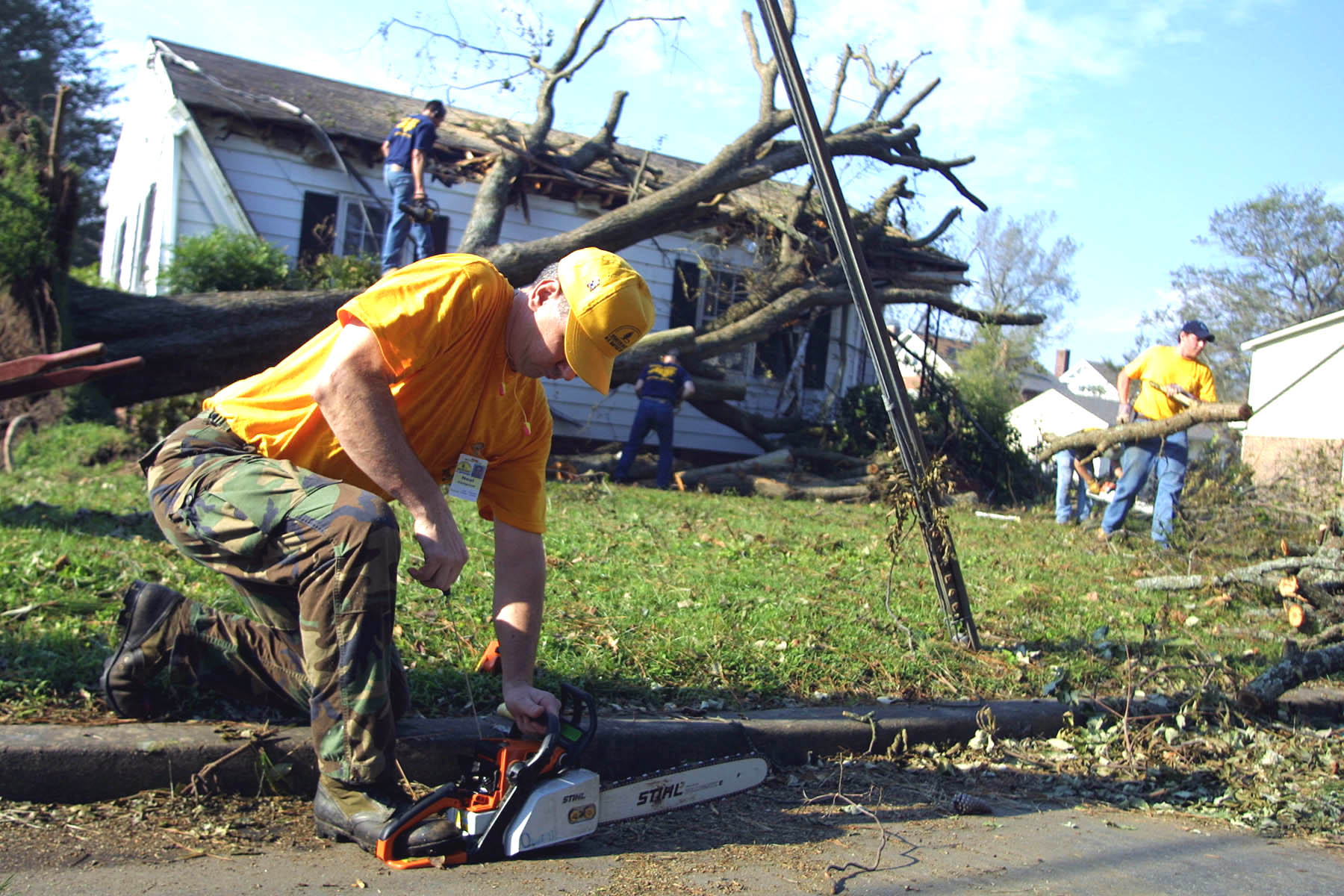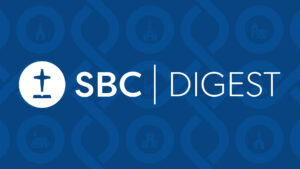
ALPHARETTA, Ga. (BP)–The largest response in the 37-year history of Southern Baptist Disaster Relief continues to escalate, with a total of 108 units activated as of Sept. 25.
Those efforts include 25 mobile kitchens, 61 cleanup and recovery (chainsaw) units, 15 shower units, four communication units, a laundry unit, a water purification unit and an assessment team. Volunteers from more than 22 states are serving in North Carolina, Virginia, Maryland and the District of Columbia.
While mobile kitchen operations in the Washington, D.C., area were scheduled to close down Sept. 25 as power was restored, the units and volunteers working there have been reassigned to assist other units in the Southeastern Virginia tidewater area that has become a focus of much of the effort.
Terry Henderson, coordinator of the Virginia operation, said the needs have increased as families run out of food and new areas of need are located, particularly in rural areas farther from the cities. Most of the Southern Baptist kitchens prepare food for distribution by the American Red Cross or Salvation Army.
“We had one mobile home park where most of the people were on food stamps and they had just bought all their food for the month, and now they have lost all their food,” said Henderson, who also serves as national Disaster Relief coordinator on the staff of the North American Mission Board. “So we’re finding a lot of pockets that need help that haven’t seen any help from the beginning.”
He also told of a shower unit set up in the parking lot of a recently vacated Wal-Mart store in Gloucester, Va., that had been converted into a Red Cross shelter.
“We found out yesterday that they had 900 showers (over two days), and four professions of faith have come through that operation,” he said, noting the unit was operated by volunteers from churches affiliated with the Southern Baptist Conservatives of Virginia Convention.
Mickey Caison, off-site coordinator for the effort and adult volunteer mobilization manager for NAMB, said about 95,000 meals were prepared by Southern Baptists Sept. 24, out of a total of 325,000 meals prepared since the hurricane struck on Sept. 18.
“We’re still cranking up, and they’re expecting the meal counts to continue to increase,” he said. “I would say we’ve got probably close to 3,000 volunteer days and 400 recovery jobs already.” A volunteer day is defined as one volunteer working one day.
The record response — with more units active than were even in existence during Hurricane Andrew in 1992 — has also prompted a need for contributions to support those efforts.
Southern Baptist Disaster Relief units generally are owned and operated by state conventions, local associations and churches, and are coordinated nationally by the North American Mission Board.
Jim Burton, director of volunteer mobilization for NAMB, said that while food and related expenses usually are covered by the Red Cross or Salvation Army, state conventions and NAMB face many expenses that aren’t funded through usual Cooperative Program channels.
“We only budget for training, travel related to training and that sort of thing,” said Burton, “As much as anything we do it’s a faith-based ministry, in that we go and respond to disasters sometimes when we’ve received no donations — trusting God and Southern Baptists to respond.”
He noted that Southern Baptists are the third largest disaster relief organization in the country, ranking behind only the American Red Cross and the Salvation Army.
Caison said most of the expenses thus far have involved helping smaller state conventions with travel and other needs — along with travel and expenses for administrative teams to set up in the area. He said NAMB anticipates helping other state conventions with a variety of expenses for both operations and equipment as needs arise.
Southern Baptists have responded in the past, Burton said. After the Sept. 11, 2001 terrorist attacks, Caison told him a commitment was needed to maintain six-months of mobile kitchen operations at an estimated cost of $300,000. There was only $19,000 in the Disaster Relief fund at the time.
“I just told him, ‘Make the commitment and we’ll trust God and Southern Baptists about what will happen.'” Burton said. “Eventually Southern Baptists gave close to $4 million.” The additional money helped Southern Baptists minister to displaced workers in New York City and funded other long-term relief efforts.
Richard Brunson, director of North Carolina Baptist Men, said the Disaster Relief ministry in that state also operates primarily on designated contributions. Already, he said, the state has had to spend about $18,000 on two large “tilt skillet” cookers to support ongoing operations, and several thousand dollars also has been spent on trailer tires and other wear-and-tear items.
“We’re kind of doing this on faith, hoping people will contribute toward it — because we’ve got to do it,” he said.
Also, he said, while immediate recovery efforts by chainsaw crews are not a large ongoing expense, there will be later expenses as crews begin long-term repair efforts for residents who do not have insurance or who face other financial hardships.
“Your operation gets expensive when you’re buying building materials,” he said.
Contributions may be sent directly to state conventions, associations or churches responding to the effort, or to the North American Mission Board.
NAMB contributions, designated either to the Hurricane Isabel effort or the agency’s general Disaster Relief fund, may be made online at www.namb.net/disasterrelief or mailed to 4200 North Point Parkway, Alpharetta, Ga., 30022.
More than 25,000 trained volunteers currently are part of the Southern Baptist Disaster Relief network nationwide. For regular updates, visit www.namb.net/dr.
–30–
(BP) photos posted in the BP Photo Library at https://www.bpnews.net. Photo titles: CHAINSAW CREW AT WORK and SHOWER MINISTRY.















